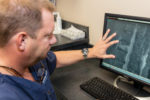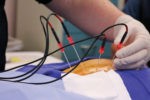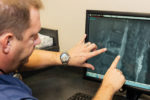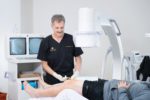SPINE Meets PELVIS

Article by Ann E. Butenas
This is where back pain often begins but remains difficult to diagnose.
Do you suffer from a nagging pain in your lower back or buttocks that just won’t quit?
It might not be what you think. Many people suffering from persistent lower back pain are dealing with sacroiliac (SI) joint issues, a tricky condition that affects the spot where your spine connects to your pelvis.
We recently sat down with Dr. C. Lan Fotopoulos from Kansas City Orthopedic Alliance to get some straight answers about this often-misunderstood source of pain. Dr. Fotopoulos brings impressive credentials to the table, too. He’s an interventional physiatrist with board certifications in Physical Medicine and Rehabilitation, Pain Medicine, Undersea and Hyperbaric Medicine, and Family Practice-Sports Medicine.
 What are the most effective treatments for sacroiliac joint issues?
What are the most effective treatments for sacroiliac joint issues?
The diagnostic challenges are very real with this condition. About 30% of all lower back pain stems from the SI joint, yet most people have never even heard of it.
The pain typically appears below the hips in the back area and can affect just one side or both. Most patients experience flare-ups when bending forward or making transitional movements like getting up from a chair.
“There is no real test for this,” Dr. Fotopoulos explained. “You cannot diagnose it through blood work, x-rays or MRIs. Instead, doctors must rely on careful patient interviews and hands-on physical examination. You have to have some level or index of suspicion, along with the history of the patient, to make a diagnosis.”
While anyone can develop SI joint problems, women tend to suffer more frequently, especially after having children. Dr. Fotopoulos also commonly sees this condition in patients who’ve had previous back fusion surgery or who live with inflammatory conditions like rheumatoid arthritis or psoriatic arthritis. Even certain injuries can trigger it.
The SI joints connect the sacrum (that triangular bone at the bottom of the spine) to the ilium bones (the wide bones of the pelvis). These joints don’t move much, but they’re crucial, as they transfer weight and forces between the upper body and legs during walking, climbing stairs, or lifting objects.
When it comes to treatment, Dr. Fotopoulos recommends a step-by-step approach:
First come the conservative treatments. Physical therapy targeting proper pelvic alignment and core strength helps many patients. Non-steroidal anti-inflammatory medications might take the edge off, and some people find relief through chiropractic care. For those whose SI joints move too much, specialized stabilization devices make a significant difference.
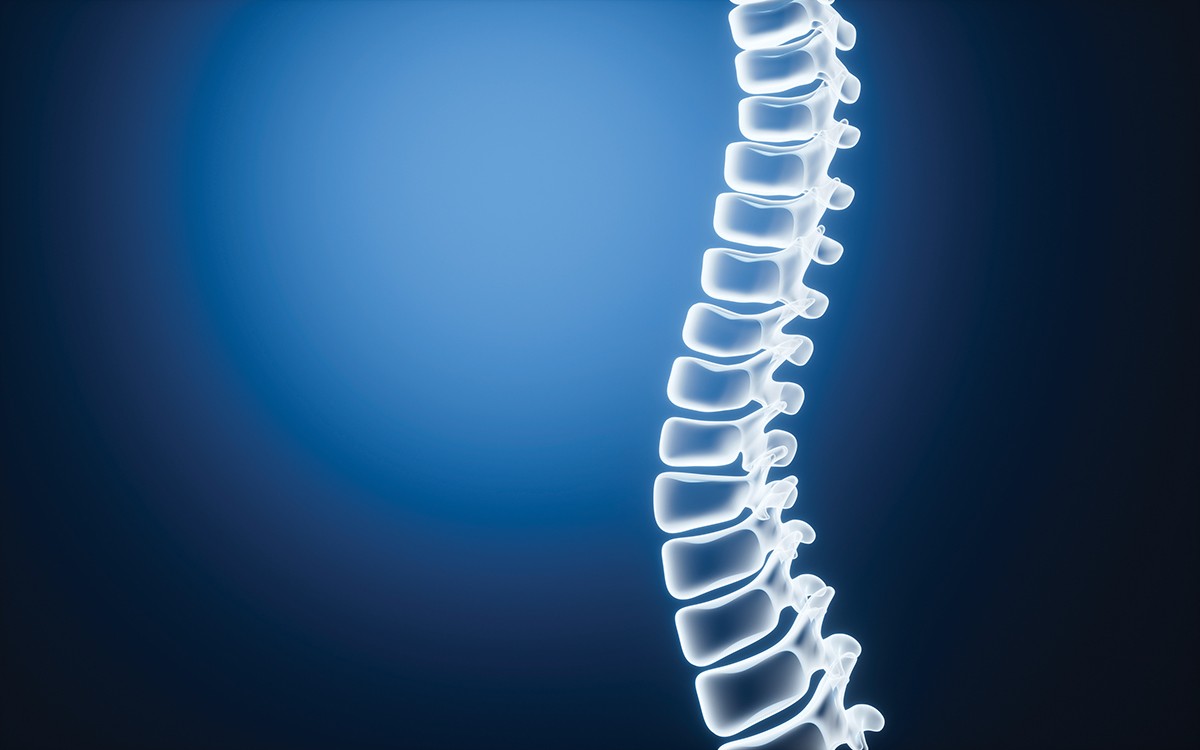
“For some patients, we need to stabilize the pelvis,” Dr. Fotopoulos pointed out. “If it moves too much, a lumbar sacral belt may be needed to reduce motion.”
When those approaches don’t provide adequate relief, it’s time for the next level. Corticosteroid injections delivered precisely into the SI joint can reduce inflammation and provide months of relief.
Some patients might hear about radiofrequency ablation, a procedure that uses heat to disrupt pain signals from the nerves. But according to Dr. Fotopoulos: this approach “was never a big winner” for SI joint pain specifically.
What’s really changing the game for tough cases is a minimally invasive approach.
“Percutaneous sacroiliac fusion has largely replaced radiofrequency ablation as a permanent, one-time treatment for the right patients,” Dr. Fotopoulos emphasized. This could be the answer for patients if other treatments only work temporarily.
“When there is no longer period of relief from physical therapy, medications, and steroids, but diagnostic injections temporarily help, fusion may be the best option,” he advised.
The key takeaway? Don’t just live with the pain. Anyone suspecting SI joint issues should find a specialist like Dr. Fotopoulos who really understands this condition. With the right diagnosis and a treatment plan tailored to each specific situation, it’s possible to get back to living life without that nagging pain getting in the way.
 For more information on compression fractures or to contact Dr. Fotopoulos with
For more information on compression fractures or to contact Dr. Fotopoulos with
Kansas City Orthopedic Alliance call 913-319-7678 ext. 3109 or visit: KCORTHOALLIANCE.COM
